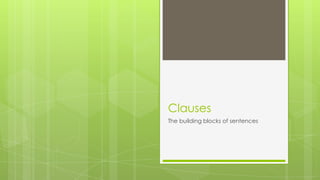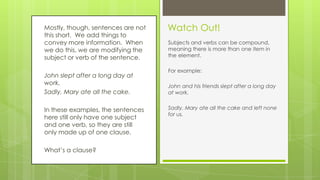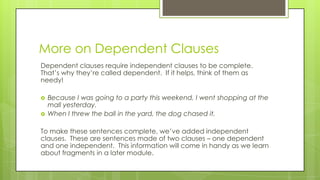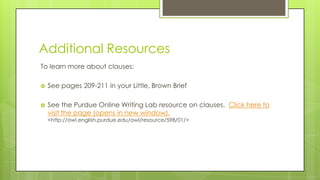1. The document discusses clauses, which are groups of words containing a subject and a verb.
2. There are two primary types of clauses: independent clauses, which can stand alone as complete sentences, and dependent clauses, which cannot stand alone and require an independent clause.
3. Dependent clauses are identified by the presence of subordinating conjunctions like "because", "when", and "while", and must be attached to an independent clause to form a complete sentence.











